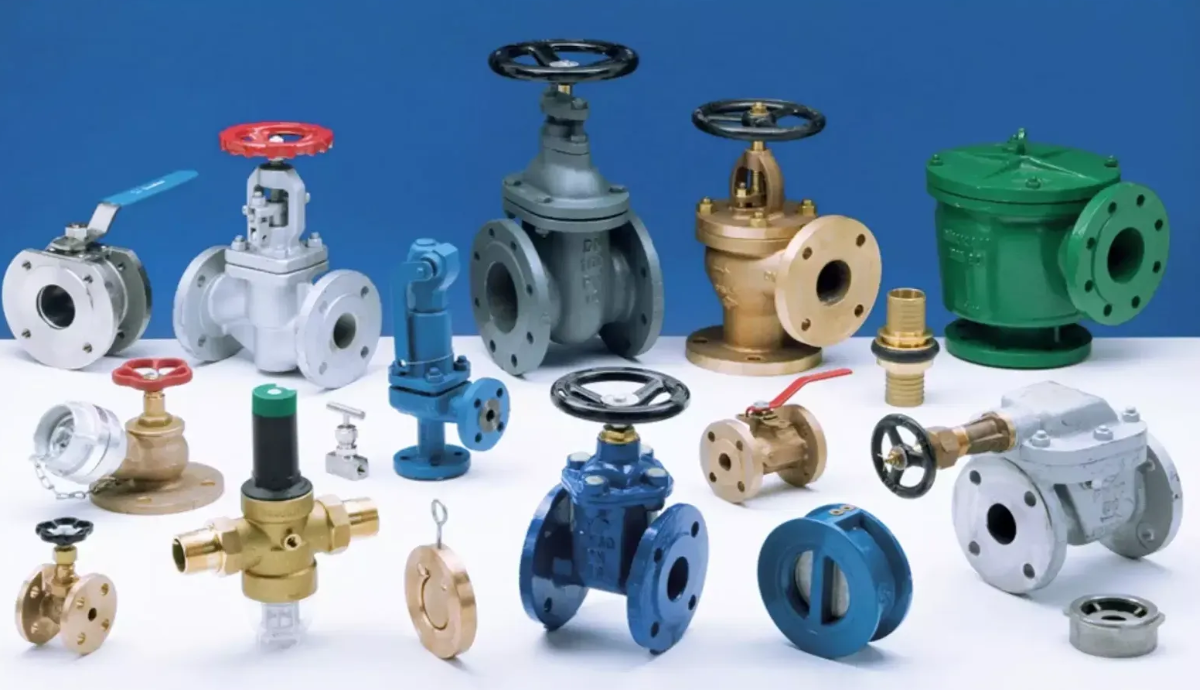
Main Materials Commonly Used for Manufacturing Valves
When considering dealing with a valve supplier, it is important to ensure the quality of the base materials typically used in manufacturing valves. These materials determine several important factors depending on the application type, the materials to be processed, and various other factors that you will find in this article. At CareWater, we prioritize providing high-quality spare parts with the latest worldwide manufacturing techniques.
The valve body, bonnet, and wedge (disc) are the main parts of the valve, which directly bear the medium pressure. The materials used must comply with the provisions of “pressure and temperature rating of the valve”. Common materials are as follows:
Grey Cast Iron
Grey cast iron is suitable for water, steam, air, gas, and oil media with nominal pressure PN ≤ 1.0MPa and temperature between – 10 ℃ ~ 200 ℃. Common marks: HT200, HT250, HT300, HT350.
Malleable Cast Iron for manufacturing valves
Malleable cast iron valve is suitable for water, steam, air, and oil media with nominal pressure PN ≤ 2.5MPa and temperature between – 30 ℃ ~ 300 ℃. Common marks: KTH300-06, KTH330-08, KTH350-10.
Nodular Cast Iron
Nodular cast iron is suitable for water, steam, air, and oil media with nominal pressure PN ≤ 4.0MPa and temperature between – 30 ℃ ~ 350 ℃. Common marks: QT400-15, QT450-10, QT500-7. According to experience, if PN ≤ 2.5MPa, it is safer to use steel valves.
Acid Resistant High Silicon Nodular Cast Iron
Acid-resistant high silicon nodular cast iron is suitable for corrosive medium with nominal pressure PN ≤ 0.25MPa and temperature below 120 ℃.
Carbon Steel for manufacturing valves
Carbon steel valve is suitable for water, steam, air, hydrogen, ammonia, nitrogen and petroleum medium with nominal pressure PN ≤ 32.0MPa and temperature between – 30 ℃ ~ 425 ℃. Common marks: WC1, WCB, ZG25, high-quality steel 20, 25, 30 and low-alloy structural steel 16Mn.
Copper Alloy
Copper alloy is suitable for water, seawater, oxygen, air, and oil medium with nominal pressure PN ≤ 2.5MPa and temperature between – 40 ℃ ~ 250 ℃. Common marks: ZCuSn10Zn2(Tin Bronze), H62, Hpb59-1(Brass), QAZ19-2, QA19-4(Aluminum Bronze).
High-Temperature Copper for manufacturing valves
High-temperature copper is suitable for steam and petroleum products with nominal pressure PN ≤ 17.0MPa and temperature below 570 ℃. Common marks: ZGCr5Mo, 1Cr5M0, ZG20CrMoV, ZG15Gr1Mo1V, 12CrMoV, WC6, WC9.
The specific selection must be in accordance with the specifications of valve pressure and temperature.
Low-Temperature Steel
Low-temperature steel is suitable for ethylene, propylene, and liquid natural gas. Liquid nitrogen medium with nominal pressure PN ≤ 6.4MPa and temperature ≥ -196℃. Common marks: ZG1Cr18Ni9, 0Cr18Ni9, 1Cr18Ni9Ti, ZG0Cr18Ni9.
Stainless Acid Resistant Steel
Stainless acid-resistant steel is suitable for nitric acid and acetic acid medium with nominal pressure PN ≤ 6.4MPa and temperature ≤ 200℃. Common marks: ZG0Cr18Ni9Ti, ZG0Cr18Ni10(Nitric Acid Resistance), ZG0Cr18Ni12Mo2Ti, ZG1Cr18Ni12Mo2Ti(Acid Resistance and Urea).
In the end, choosing the appropriate materials when manufacturing valves is a crucial process to ensure their proper and efficient functioning. Materials play a critical role in the strength, durability, tolerance, and corrosion resistance of valves. With a deep understanding of operating requirements and the mechanical properties of materials, engineers, and manufacturers can make the right decisions and achieve excellent performance for valves in various applications.
Using suitable materials and following good engineering practices contribute to improving the efficiency, reliability, and safety of valves. This is crucial in many industries, including oil, gas, petrochemicals, energy, chemical processing, and marine industries.


























